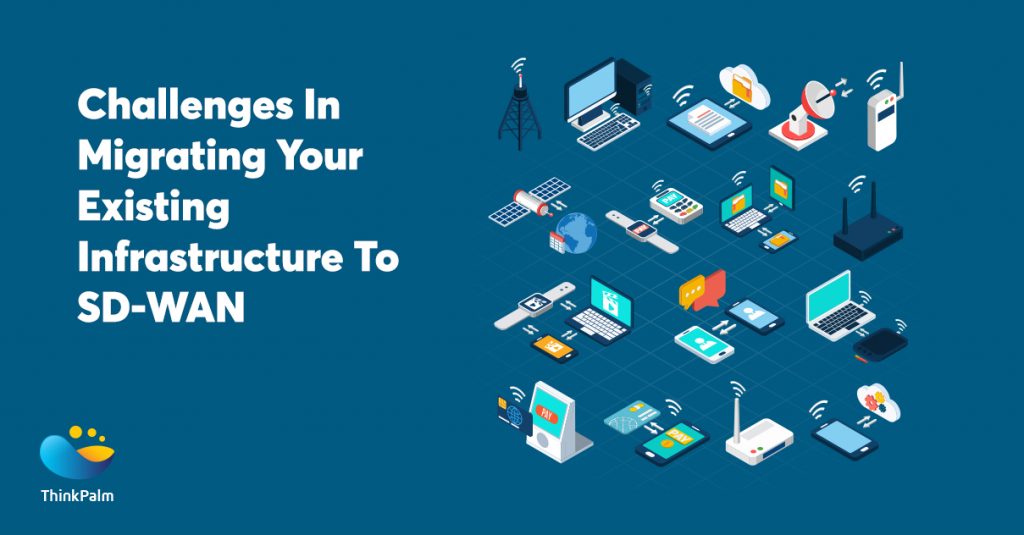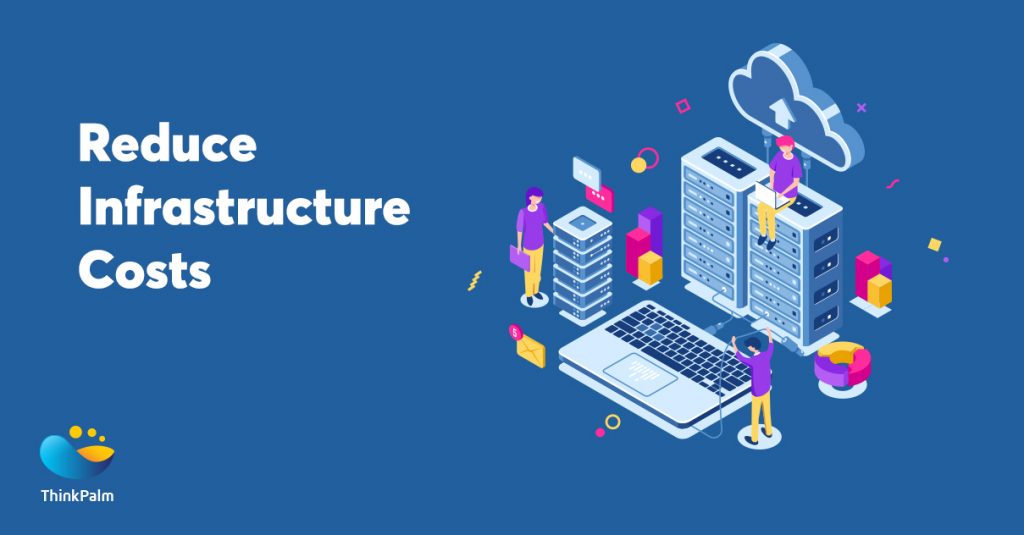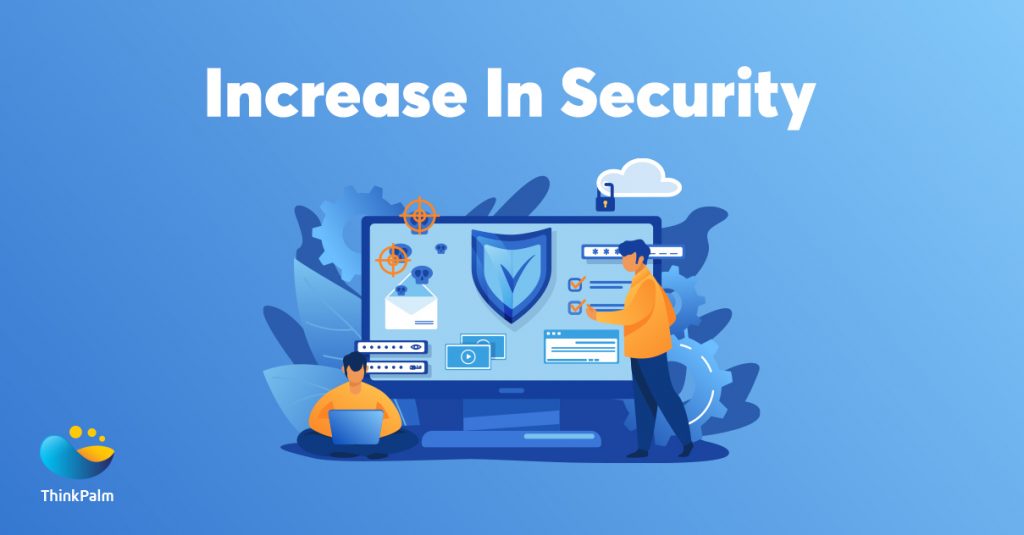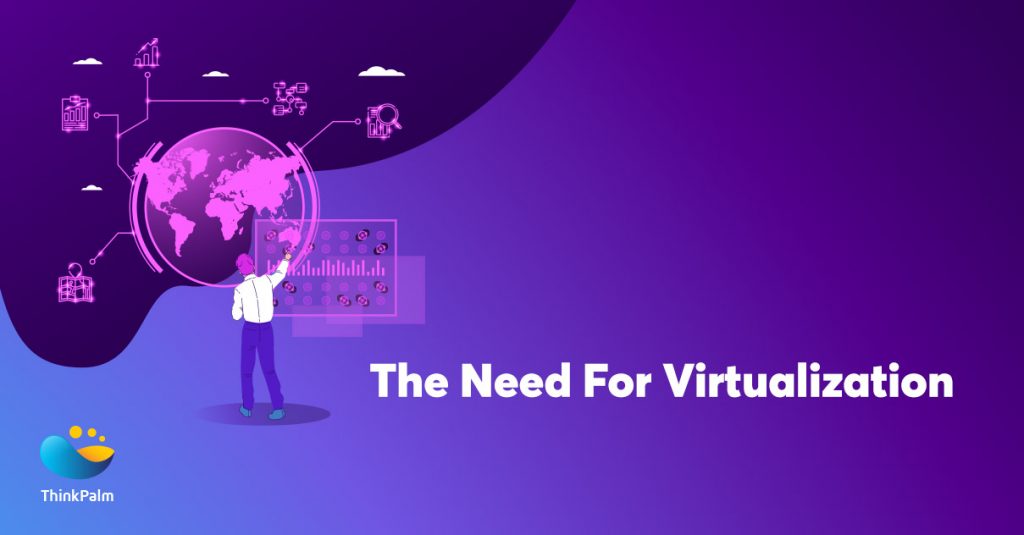
How would you like to connect users to applications from any time to anywhere from any device and to wherever those applications reside?
If you would like to enhance application performance across many networks, sites and connectivity types; then SD-WAN is the answer to all your queries!
Every blooming enterprises rely on the network to run high bandwidth applications and maintain enhanced data consumption. That’s why businesses must remain competitive by concentrating on virtualizing their network and maintaining a scalable and secure connection.
Instead of routing traffic entirely based on addresses, an SD-WAN is application-aware, it uses software to steer traffic more intelligently and efficiently across the wide-area network based on the business requirement of an application.
The virtualization technology has been leveraged greatly among corporations and businesses all around the globe, they opt to strengthen their digital infrastructure to get a return on expense by decreasing hardware costs. Virtualization helps enterprises overcome IT costs connected with complicated computing environments such as hardware energy consumption and maintenance costs.
Virtualization centralizes the entire management and assists you in the ideal utilization of the resources accessible. Below are a few reasons why you should virtualize your business.

Most of the businesses find the maintenance and management of hardware to be expensive and resource consuming. Virtualizing with SD-WAN benefits by reducing expenses minimizing infrastructure costs and decreasing hardware maintenance. Therefore, to reduce expenses, the digital transformation needs to go beyond simply retiring branch routers in favor of an SD-WAN framework, it must encompass a rearchitecting of the WAN and a shift toward a single platform that can unify network functions at the WAN edge including SD-WAN, routing, security and WAN optimization. By doing so, enterprises can simplify and consolidate the WAN edge and begin to leverage cloud services, like security for example.

Managing a virtual infrastructure with SD-WAN enables IT experts to control and connect resources to meet the ever-changing business requirements, presenting them with a more adaptable working environment.
Traditionally, applications were centrally hosted from the data center and users connected to these applications via private MPLS networks. Today, many applications and services have migrated to the cloud (SaaS). Other applications and infrastructure have moved to the public cloud (IaaS). Connecting users to cloud applications, services and workload instances requires a fundamentally different approach to the wide-area network. Employees do not introduce unique or new servers for each different application. Rather, the network must have the intelligence to identify the application and dynamically steer it to its intended destination, taking into account security and quality of service policies required to deliver the highest quality of experience to the user. SD-WAN can enable this.

Virtualizing your network with SD-WAN contributes to more security to the network. It enhances the businesses’ capability to achieve quicker security patches in the occurrence of a data breach, consequently improving the organization’s capacity to improve security.
Also, several SD-WAN solutions have foundational security built-in, encryption or data at rest and in motion, stateful zone-based firewall capabilities along with the ability to segment applications in alignment with defined security policies. As required, the SD-WAN solution must have the ability to integrate or service chain to leading next-generation firewalls for additional inspection and verification of traffic.
With all the hype on virtualization and businesses trying everything to stay ahead of the competition; where are we now? In recent years, SD-WAN or Software-Defined Wireless Area Networking has emerged as the subsequent trending innovation in the networking industry. Inspired by global trends towards the adoption of the cloud-first strategy and explosion of smart internet of things (IoT) devices in enterprise networks; there has been a growing demand for reliable and faster WAN connections.
Virtualizing the network with SD-WAN comes with advantages; networks can be shaped dynamically, they can be fine-tuned for specific applications and security policies can be installed on each individual system.
Therefore, if you wish to accelerate your enterprise connectivity and adapt to the rapidly changing business & application environment; then SD-WAN is the right choice for your business!

Enterprises all around are witnessing a substantial increase in their WAN traffic with the growing dependence on software to stimulate critical business functions. Key computing trends such as the advent of cloud services, SaaS, Big data and IoT among others are driving the need for network resources with high performance and low latency.
Several medium to large enterprises uses an IP/MPLS based WAN implementation; which includes expensive infrastructure, complex networks and difficult to manage networks. The solution?
SD-WAN decouples network control and forwarding functions. It is a technology that optimizes the enterprise WAN connection for efficient usage of MPLS links and other connectivity options like LTE or direct internet for better network experience.
So, given all the hype about Software-Defined Wireless Area Networking, what are the challenges in migrating your existing infrastructure to SD-WAN and how to overcome them?
For enterprises that previously have been using MPLS, understanding how to manage MPLS while transitioning to SD-WAN can be difficult. If your enterprise yearns to decrease MPLS expenses, increase productivity, reduce hardware devices, and provide reliable internet then SD-WAN would be the best option for your business.
Several enterprises deploy SD-WAN as a hybrid network, leveraging/retaining MPLS where it makes sense and introducing broadband or 4G LTE wherever it is necessary. The benefit of SD-WAN is the flexibility to use any combination of WAN transport to connect users to applications, including the ability to connect branch users directly to the cloud over broadband with a technique called local internet breakout. Some enterprises will opt to shift away from MPLS to broadband, while others will continue to deploy SD-WAN as a hybrid network.
The IT team of an enterprise often misunderstands the importance value proposition of SD-WAN, because the virtualization demand may not be related to various different enterprises.
An enterprise can achieve expense conservation with SD-WAN, by selecting the right framework, this will help the networking leads in an enterprise avoid delays that can ultimately raise business costs.
There are several factors that can modify the deployment decision of an SD-WAN framework, including the user requirements, remote site structure and also the budget limitations. Below are some of the factors you need to be sure about before selecting the right SD-WAN framework:
It’s essential for companies to focus on the framework maintenance even after deploying SD-WAN architecture, thus, ensuring that it operates efficiently. Even though the implementation of artificial intelligence (AI) within an SD-WAN framework reduces various manual processes, the architecture, however, requires continuous appropriate information concerning variations in growth, user requirements, or industry demands. This data needs to be accumulated and analyzed so that the intelligence formulated into SD-WAN architecture can perceive the changes and implement relevant changes in data flow policy.
The transition from traditional networking to an SD-WAN can be a quite complicated process for enterprises, as there are several factors to be considered. Therefore, most IT experts prefer a phased migration, with the newly implemented SD-WAN operating side by side with the traditional WAN to allow a swift cutover changeover when required.
Consequently, transitioning one network at a time with your SD-WAN provider will cause only the slightest business disruption possible.
Also, make sure your security and network policies are configured and equipped to go with each step transitions.
Migrating from a legacy network to an SD-WAN may seem mind-boggling, especially when you’ve been following traditional networking for years. Therefore, if you prepare carefully, find a relevant SD-WAN vendor and evaluate your strategy, you can enjoy a seamless and non-disruptive SD-WAN migration.
Feeling lost in the technological upsurge? At ThinkPalm, we can help you transform your business processes, change the way your networks are used, and enable you to adopt the new technologies with our futuristic communication solutions and services. Aided by a world-class testing lab equipped with Spirent and Ixia devices, R&D initiatives focused on exploring the tremendous opportunity in SD-WAN and data analytics, and cutting-edge solutions including cellular routers, we have established a firm grasp on all facets of the evolving communication industry.